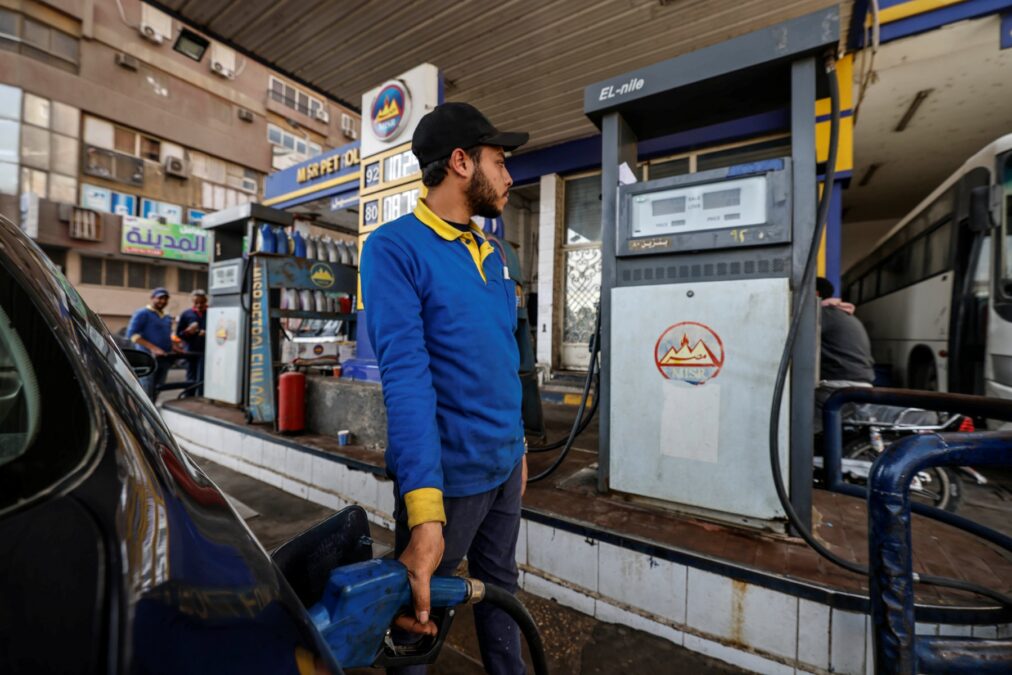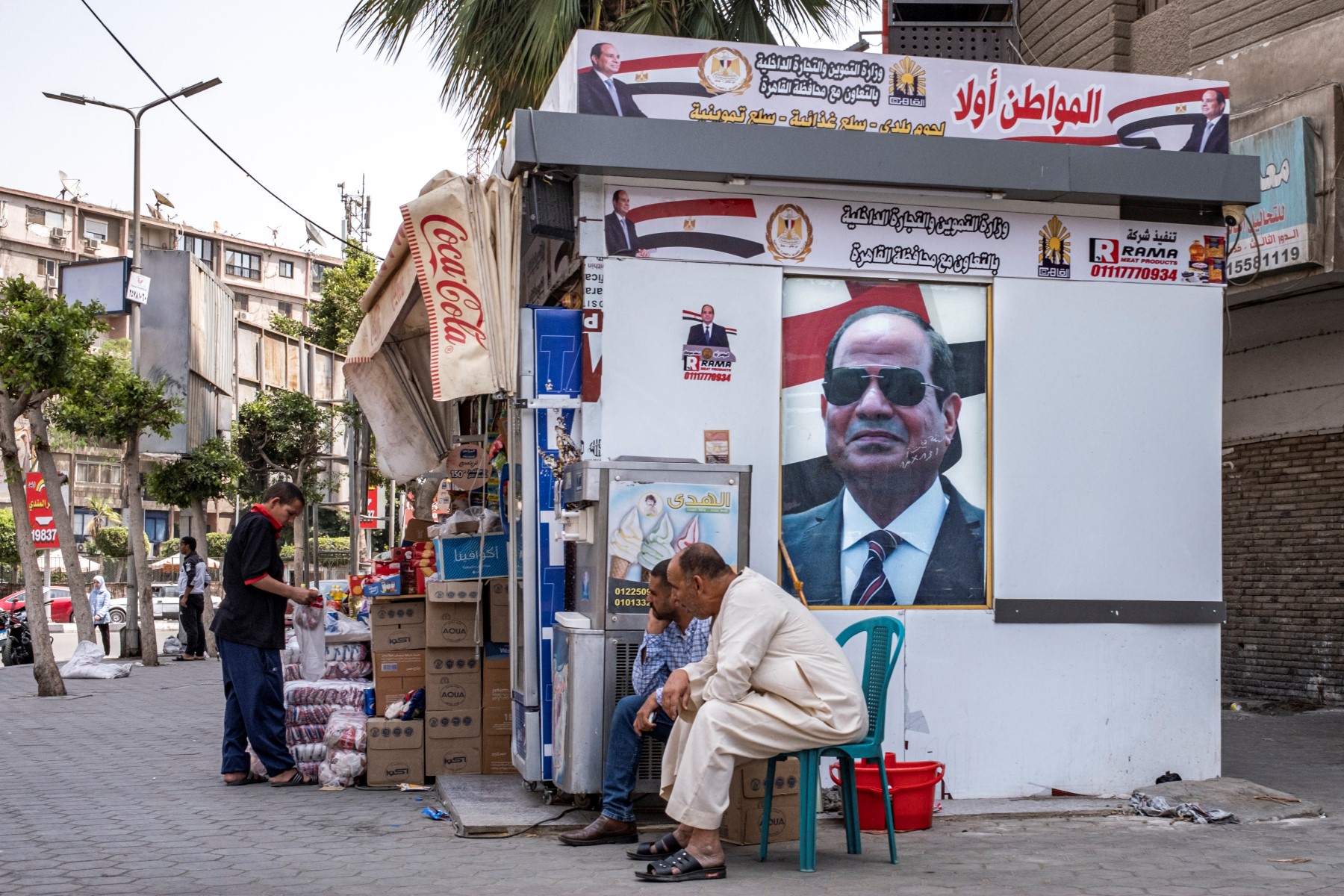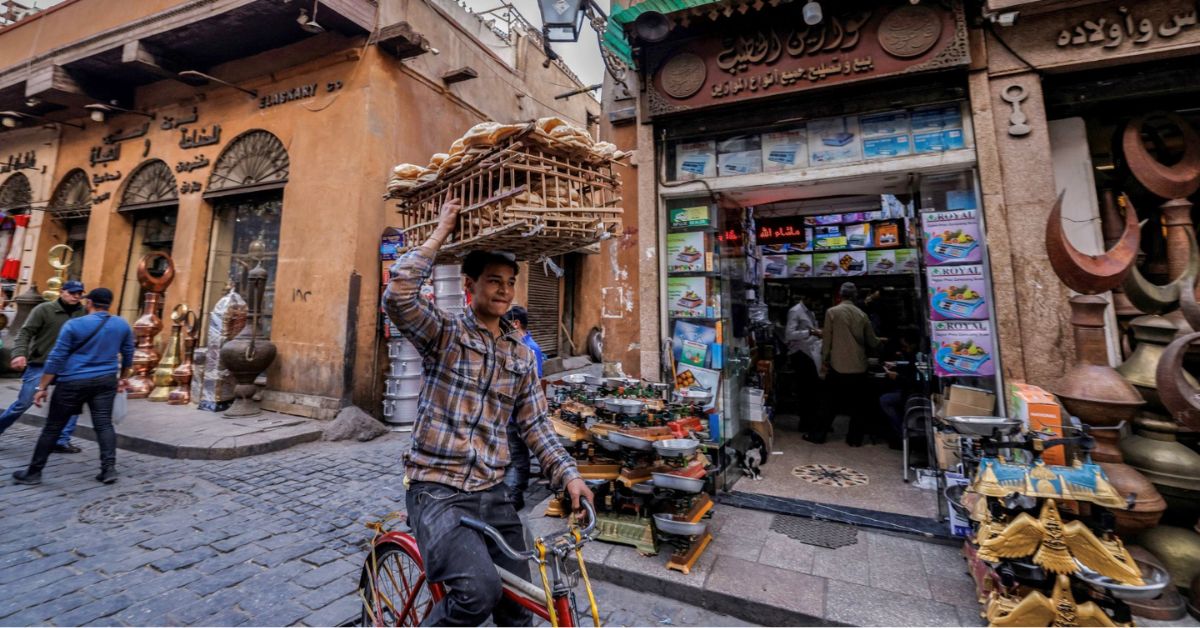CAIRO, EGYPT — Like many thousands of others in the crowded city of Cairo, Sarah Mahmood, too, has found life to be tough during the last few years. The 30-year-old marketing executive has seen the value of her income dwindle precipitously, with every successive paycheck buying her fewer and fewer things.
For the last many months, she had set aside money from her salary to buy herself a new car. Each time she feels she has saved enough for the purchase, the Egyptian currency takes a tumble, making Sarah’s wish all the harder to fulfill.
And for common Egyptians it is equally a struggle to purchase items as diverse as bread, laptops or smartphones.
A World Bank report titled “Food Security” showed a rise in inflation rates for food commodities across the world. Still, the report revealed that Egypt is among the countries most affected by inflation in food commodity prices, with an inflation rate of 37.3 percent in food prices during 2022, achieving 16 percent real inflation in food prices, making it the sixth highest country in the world.
With the Egyptian currency sliding against the US dollar, analysts are divided on whether this is the beginning of the Egyptian economic crisis or whether the country is about to witness green shoots by the end of 2023.
During the last year or so, the value of the Egyptian pound against the US dollar has plunged by a whopping 49 percent. A dollar fetched 15.76 Egyptian pounds in March 2022, while in the last week of June 2023, it yielded 30.90 Egyptian pounds, a more than hundred percent jump.
With the worth of the Egyptian pound significantly devalued, imports during the past 15 months have become expensive, and exports to foreign countries were much cheaper compared to last year.
Egyptian economy at a glance
- The Egyptian pound has devalued by 49 percent against the US dollar in the last year.
- Egyptian exports stood at US$4.17 billion in December 2022 but fell to US$3.02 billion in April 2023, indicating a significant decline.
- Imports in December 2022 were US$6.1 billion, while in April 2023, they amounted to US$5.3 billion, leading to a trade deficit.
- The country’s food inflation in May 2023 surged past 60 percent, resulting in skyrocketing prices of essential food items such as milk, bread, and chicken.
- Egypt’s debt-to-GDP ratio is currently over 90 percent, making it one of the highest in the world.
- Analysts attribute the economic crisis to various factors, including inflexibility in the exchange rate system, the dominance of the state, and high debt levels.
- The Russia-Ukraine war has had a significant impact on Egypt’s economy, affecting trade, tourism, and foreign direct investment.
- The World Bank expects the Egyptian economy to lead growth in the Middle East region, with a projected growth rate of 4 percent during the current fiscal year and 4.7 percent in 2025.
- Egypt and the World Bank Group have agreed on a Country Partnership Framework (CPF) to support private sector job creation, enhance human capital outcomes, and improve resilience to shocks.
- The Gulf Arab countries, such as Saudi Arabia and the UAE, have extended financial support to Egypt, but with conditions and a focus on structural reforms and privatization.
Egyptian exports, according to the official figures, stood at US$ 4.17 billion in December 2022, while in April 2023, they fell to US$ 3.02 billion. Imports in December 2023 were US$ 6.1 billion; in April 2023, it was US$ 5.3 billion, indicating a significant trade deficit.
The country’s food inflation in May 2023 surged past 60 percent, resulting in skyrocketing prices of essential food items such as milk, bread, and chicken. During the Eid al-Adha this year, a buyer had to pay 375 Egyptian pounds (US$12.14) for one kilogram of beef as compared to 155 Egyptian pounds (US$5.02) on Eid last year.
Similarly a kilogram of mutton costs 385 Egyptian pounds (US$12.46) compared to 160 Egyptian pounds (US$5.18) last year.
While livestock traders and butchers make significant profits during the festival in most Muslim-majority countries in Egypt though the traders saw fewer and fewer buyers.
What happened?
The economic scenario of the country did not look this bleak and desperate in 2021. Then it posted a GDP growth of 3.3 percent, fueled by increased tourism, foreign investment and government spending on infrastructure. But during the past year, Egypt has faced many economic challenges, such as high debt levels, unemployment, inflation and the dwindling value of its currency against the US dollar. Its unemployment rate is currently at 10.3 percent, with the young struggling to find work.
Yet, one of the biggest challenges facing the government is the high level of debt. Egypt’s debt-to-GDP ratio is currently more than 90 percent, one of the highest in the world. Such enormous debt burdens the economy and makes it difficult for the government to invest in important sectors such as education and healthcare.

In the opinion of many analysts, many domestic and external factors are responsible for the country’s economic mess. GarbisIradian, chief economist for Middle East and North Africa at the Institute of International Finance, believes domestic factors like inflexibility in the exchange rate system and the dominance of the state, particularly the military establishment, have caused the economy to lose momentum.
Speaking to TRENDS, he said, “The longstanding reliance on nonresident portfolio flows has exposed the Egyptian economy to persistent volatility from the “boom-bust” cycles of investor sentiment. Nonresident holdings of local treasury bonds collapsed, although some foreign investors re-entered the Egyptian market recently.”
Iradian also lowered the growth forecast for Egypt from 4.2 percent to 3.5% for the current fiscal year ending in June 2023. However, growth could rise above 4 percent in the fiscal year 2024 if the authorities implement most of the reforms recommended by the IMF.
“Egypt has a lot of potentials to grow faster in the coming years, and we do not see a decreasing pattern in the economy unless the authorities hesitate in implementing the needed reforms”, Iradian believes.
In addition, Egypt’s government’s plan to sell state-owned assets will help significantly to stabilize the Egyptian pound, in Iradian’s opinion. He feels additional external money, mainly from the GCC, will be mobilized, and the IMF program will be restarted.
The External Factors
The economic crisis, according to many in Egypt, has nothing to do with “internal factors” but everything to do with what is going on beyond the borders of the country.
One among them is Ahmed Shawki, a member of the advisory board of the Egypt Center for Economic and Strategic Studies. He told TRENDS that the country’s economic mess has mainly resulted from the war in Ukraine.
He noted that during the COVID-19 pandemic, when big economies struggled, Egypt could absorb the crisis with significant assistance from the banking sector, which financially supported the country’s industry and agriculture sectors.
“Regarding the current crisis, Egypt’s government presented a similar support file in its new general budget for the fiscal year 2023- 2024, which will also provide more financial assistance for food and other goods,” he said.
The Egyptian government has contracted with the International Finance Corporation, a branch of the World Bank Group, to empower the private sector, to provide support and technical advice for the government offering program, and to assist in structuring and preparing the companies targeted for offering to the private sector, to achieve the government’s goal of selling assets worth US$40 billion within four years.
The Egyptian government has announced to sell stakes in 32 companies by the end of the first quarter of 2024. The list includes companies operating in 18 activities, including three banks and two companies affiliated with the army.

Shawki clarified that the government’s plan to sell state-owned assets helps return the value of the Egyptian pound and somehow slow the crisis, yet it is not the only step.
“Other than selling state-owned assets, the government needs to lower the imports and increase the exports through additional financial support for the local industry and agriculture,” said Shawki.
At the same time, localizing the Egyptian industry and attracting new investments will assist the country’s economy by providing job opportunities for the people and decreasing the inflation rates.
Egypt’s government financial support for the local sectors must continue for at least a year or two, according to Shawki, especially since the local currency lost almost 95 percent of its value in the past two years.
And yet the World Bank expects the Egyptian economy to lead growth in the Middle East region at 4 percent during the current fiscal year and touch 4.7 percent in 2025.
The World Bank also said Egypt was the largest recipient of foreign direct investment flows in the Middle East and North Africa region in 2022, accounting for 87 percent of the total foreign direct investment.
The bank indicated that the volume of foreign direct investment inflows to the region increased by 70 percent last year, mainly driven by a sharp rise in inflows to Egypt. The rise in foreign direct investment flows to Egypt reflects a boom in green investments and an increase in the capital of existing companies.
Russia-Ukraine War
In a connected world, a crisis in one region could impact another thousands of miles away. Egypt-based The Economic Research Forum (ERF) released a report late June 2023 highlighting impact of Russia-Ukraine war on the Egyptian economy.
The report titled, “The Socio-Economic Impact of the Russia-Ukraine Crisis on Vulnerable Families and Children in Egypt: Mitigating Food Security and Nutrition Concerns”, says that Egypt has been heavily affected by global economic shocks, including the economic implications of the Russia-Ukraine crisis. The crisis has left its mark on trade exchange, rising inflation rates, and the import of wheat and other necessary products, in addition to the tourist influx.
Egypt’s economic relationship with Russia and Ukraine relies on three main channels: trade, tourism, and Foreign Direct Investment (FDI), according to the ERF report.
Both Russia and Ukraine have had a strong trading relationship with Egypt.
Wheat is an extremely strategic crop for the country [Egypt] because it is a main component of the bread that Egyptian households depend on in their day-to-day food consumption. In the five years before the crisis, Egypt sourced around 85 percent of its wheat imports, on average, from Ukraine and Russia.
Also, Egypt was considered the primary destination for wheat exports from both countries. Data collected just before the crisis reveals that Egypt imported around 22 percent and 17 percent of Russia and Ukraine’s wheat exports, respectively.
The report says that the impact of the Russia-Ukraine crisis on Egyptian households is evident when considering that the total value of imports that Egypt imported in 2021 amounted to US$74 billion, of which US$2.4 billion was for wheat.
According to the Ministry of Supply and Internal Trade, Egypt imported around 5.5 million tons of wheat in 2021, including about 3.1 million tons from Russia and 1.9 million tons from Ukraine. These figures mean that Egyptian households will continue to be affected by the wheat shortage caused by the crisis if no alternative sources are found.
The report further says that Egypt has also been heavily dependent on tourism from both Russia and Ukraine. Russians and Ukrainians have accounted for approximately 30 percent of the flow of tourists coming into Egypt, a main source of foreign currency. Due to the conflict and the sanctions that have been imposed on Russia, this percentage has declined, dealing another blow to Egypt’s tourism sector while it is still reeling from the effects of the COVID-19 pandemic.
The ERF report highlights the third big component – foreign direct investment. It says FDI constitutes another channel through which Egypt relies on Russia. Egypt holds a position as one of Russia’s most important destinations for investments in coal, oil, and gas. Russia’s FDI accounts for approximately 30-60 percent of Egypt’s total FDIs in energy. This dependence has made matters more complicated for the Egyptian economy.
Egypt’s economy is already in a vulnerable position, struggling with low foreign exchange reserves, high interest payments, an unstable tourism sector, the threat of food insecurity, and rising inflation. These difficulties are expected to worsen due to the ongoing Russia-Ukraine crisis, according to the ERF report.
Escalations in inflation rates in Egypt from January 2022 to December 2022 mostly affected the prices of bread and cereal, which increased by 58.3%. The prices of milk, cheese and eggs also increased by 48.9% in December 2022. These ingredients are crucial for children’s growth.
According to a 2022 telephone survey quoted by ERF, food price increases led 74% of households to limit their food consumption, 93% to reduce their protein consumption, and about two-thirds of households to reduce their consumption of eggs, vegetables, and fruits.
Given that more than 92% of poor households in Egypt have children, declines in food consumption are likely to affect child nutrition, and increase the risk of food insecurity for children. While government protection programs such as Takaful and Karama Program (TKP), food subsidies, and the National School Feeding Program (NSFP) have had a major impact on protecting and supporting children in vulnerable households, there is a need for additional interventions in the short to medium term, says the ERF report, recommending that in the short term, officials should ensure that TKP benefits reach extremely poor households, especially those with children. Officials should expand school meal programs to ensure that more vulnerable children receive the nutrition they need for healthy growth.
The World Bank Partnership
Egypt and the World Bank Group agreed on a Country Partnership Framework (CPF) a few weeks back. The new CPF aligns with Egypt’s Sustainable Development Strategy (SDS), “Egypt Vision 2030,” and the National Climate Change Strategy (NCCS) 2050.
The CPF seeks to accomplish its objectives by achieving three high-level outcomes:
More and better private sector jobs: through supporting the creation of an empowering environment for private sector-led investments and job opportunities as well as creating a level playing field for the private sector.
Enhanced human capital outcomes: through supporting the provision of inclusive, equitable and improved health and education services as well as effective social protection programs.
Improved resilience to shocks: through strengthened macroeconomic management, and climate change adaptation and mitigation measures.
The CPF also intends to strengthen Egypt’s role in regional integration, which has positive implications for Egypt and potentially the broader region through enhanced regional trade and greater connectivity in infrastructure, transport, energy, and labor. Through the CPF, the World Bank Group will also continue to support Egypt’s ambitions to lead the climate mitigation and adaptation agenda in the region, following the presidency of COP27.
Additionally, the CPF aims to integrate two cross-cutting themes – governance and citizen engagement, and women’s empowerment – across programs.
The CPF will be implemented jointly by the World Bank, the International Finance Corporation (IFC), and the Multilateral Investment Guarantee Agency (MIGA), building on the three institutions’ current portfolios and adopting a flexible approach to lending. The CPF will be supported through a financial envelope of US$7 billion in lending (US$1 billion per year from IBRD and about US$2 billion during the entire CPF period from IFC), in addition to guarantees from MIGA. Partnerships remain a crucial component of the strategy.
Green Shoots from the GCC
The oil-rich economies of the Arabian Gulf countries have extended a helping hand to Egypt in these times of economic trouble. The political differences have been set aside with Egypt normalizing relations with Arab countries such as Qatar and with regional powerhouses such as Turkey and Iran.
Saudi Arabia and the UAE have been traditional supporters of Egypt. Last month, Abu Dhabi-based green energy firm Masdar signed a deal with Egypt to build US$10 billion onshore wind farm – one of the largest in the world. Last year, Saudi Arabia deposited US$5 billion in Egypt’s central bank.
Though most financially privileged Arab countries have shown keen interest to help Egypt, but this time they have made clear to Egypt that there will be no “blank checks”. Hence, the Gulf Arab countries are making diligent investments and making sure that Egypt agrees to IMF conditions for loans.
The country’s policymakers will need to make hard decisions to initiate structural reforms with a significant impetus to the private sector and privatization along with embarking on to devalue Egyptian pound and loosening army and government’s control over the country’s economy. The ball is in Sisi’s court.

